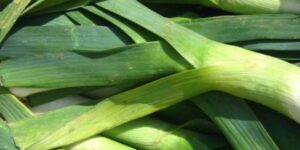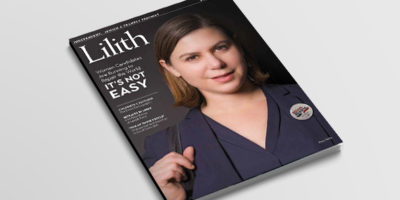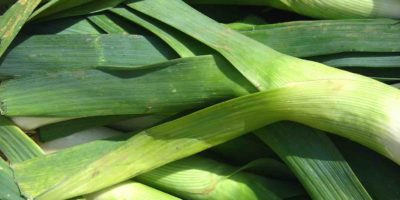Lilith Feature
When Food Betrayed the Jews

By Susan Barocas
Today, when we eat a sopapilla in a Mexican restaurant, enjoy a slice of sponge cake or an almond cookie, or share Spanish tapas with friends, we don’t recognize that these and other dishes can be traced back through centuries to Spain’s medieval Jews and the recipes that Spanish Jewish women carried when they fled religious persecution, scattering over much of the known world.
Like generations and generations of women before and since, we know very few of their names. Still, we prepare and eat food we can trace to the dishes these women in medieval Spain made either daily or for Shabbat and for holiday celebrations. Via mothers and daughters, mistresses and maids, the foods of the original Sephardim have endured for hundreds of years, and have influenced cuisines around the world.
This knowledge has special meaning to me. I am descended from these Jewish women of Spain, and I think of them often, especially when I’m cooking. Now it’s time our culinary precursors get the recognition their foods warrant—even if the cooks themselves must remain unavoidably anonymous.
For me, when I first got interested in knowing more about Sephardic food, it wasn’t at all a women’s story. For me, the knowledge came through my father, and the foods he brought to our family from his parents.
Growing up in Denver in the 1950s and ’60s, the only Sephardic food I knew was what my father cooked at home. (See Lilith, spring 2017, for my early cooking experiences.) There were no Sephardic cookbooks around, and my mother’s food was strictly Ashkenazic. But from my Poppi, whose parents emigrated from places in the Ottoman Empire that are now part of Turkey and Macedonia, I learned to cook lentils, fassoulya, yaprakas (also known as dolmas, stuffed grape leaves), and his favorite sponge cake. I learned to love cooking not just with the garlic my father grew, but also with onions, leeks and eggplants.
I don’t remember even seeing a leek or eggplant in my friends’ homes back then, much less seeing any other father who cooked. Food at home was the realm of women. Yet, outside of our homes, all the real chefs I knew were male—from Chef Boyardee with his picture on those labels to every restaurant chef my dad befriended in pursuit of his not-so-secret desire to own a restaurant someday. The important cooking, the cooking that mattered beyond survival, seemed to be done by men.
When I moved to New York in the late 1980s, I started to explore my Sephardic heritage and to learn more about the history, culture and the wonderful variety of Sephardic cuisines. I read books and took classes in Ladino. I became active in Sephardic organizations and met women who cooked all kinds of Sephardic foods, women from Turkey, Greece, Italy, Syria, Morocco, Mexico, Yemen, Israel, Argentina and more.
I found cookbooks with written recipes for Sephardic dishes, compiled, I was surprised to see, starting in the 1970s by sisterhoods of synagogues in Atlanta (The Sephardic Cooks, Congregation Or VeShalom, 1971), Los Angeles (Cooking the Sephardic Way, Temple Tifereth Israel, 1971) and elsewhere. I sometimes attended Manhattan’s Spanish and Portuguese Synagogue, where I heard my father’s Ladino being spoken and met Gilda Angel, whose 1986 Sephardic Holiday Cooking: Recipes and Traditions has become a classic.
Through the foods of these contemporary American women, I started to find my way to the Jewish women and food of medieval Spain. It was obvious in the synagogue cookbooks that there were recipes for similar foods submitted by women from many different countries: huevos haminados, the long-cooked hard boiled eggs, and quajado (sfongato) a baked dish usually with leeks, eggplants, Swiss chard and/or spinach bound together with eggs. There were rings of shortbread-like cookies called biscochos by Jews of Turkey, Greece and Mexico, and crispy fried bimuelos or loukomades drizzled with honey syrup, or with rose or orange water. Even with different names and some variations, the dishes were clearly connected by ingredients, process and even by the occasions on which they were served, if the recipe authors provided the foods’ social history.
The more I found out, the more it seemed to me that no Jews were ever more marked by the food they grew, cooked, served and ate than the Jews of Spain. This was food closely related to a history that twisted and turned from persecution to prosperity and back again many times, according to who ruled Spain—in simplest terms, whether rulers were Christians or Muslims.
Jews first settled in the Iberian Peninsula around 250 B.C.E., where they lived under the control of the Visigoths and the Holy Roman Empire. The early Catholic Church ostracized Jews from the larger Spanish community through decrees that included refusing communion to any cleric or layperson who ate with a Jew. Worse yet, in 613 C.E., nearly 900 years before the well-known expulsion of the Jews from Spain and Portugal, the Church ordered Jews to convert to Christianity or face expulsion. Some managed to survive as Jews, but many did leave or became Spain’s first “secret Jews.”
The conquest of nearly all of Iberia in 711 by the Islamic Arab and Moorish army from northern Africa ushered in what we fondly remember as the “Golden Age of Spain,” for most of four centuries a time of Jewish renaissance. Spain became the center of Jewish life and religion, with more Jews––probably around half a million at the peak––living in Iberia than in any other place in the world. Synagogues and schools were built. Kosher butchers and other Jewish stores lined the streets in Toledo and other cities.
During these centuries, when Jews enjoyed freedom of movement and socialization, Jewish and Muslim women often visited in each other’s homes, sharing food and recipes. Jews incorporated and adapted ingredients and spices brought to Iberia from northern Africa with the Moors. They began cooking with seasonings like saffron, caraway and capers as well as with rose and orange waters. Rice and artichokes found their way onto Jewish tables.
Homes had gardens where women grew the leeks, eggplant and chard favored by Jews, along with lettuce, lavender, purslane, edible flowers, radishes, parsley, cilantro, fennel, garlic, citron leaves, mint, thyme and the bitter herb called rue. Vinegar made from leftover wine was combined with olive oil for dressings. Often verduras, cooked green vegetables, were sprinkled with the wine vinegar. Honey, almonds and pine nuts were favorite ingredients along with spices like cinnamon, cloves, cumin, ginger and nutmeg.
The chickpeas, garlic and onions that are so important in Sephardic dishes were considered lower-class foods and were not found in many Christian or Muslim recipes. Yet chickpeas, grown in Iberia since the days of the Romans, were an important source of protein, especially when there were problems getting kosher meat.
What differentiated Jewish cuisine from that of their neighbors in medieval Spain was much the same for Jews throughout history: how meat was prepared so that it was kosher; how unkosher foods were avoided, including fish without scales and the pork so beloved by Christian Spaniards; the separation of meat and milk; and special foods for the observance of the Sabbath and festivals.
These special food traditions included snacking on cold appetizers and small dishes called “mezé” during Jewish family gatherings for Shabbat and holidays. Some common Sephardic hors d’oeuvres were cheese dumplings, yogurt soup, fried pumpkin, simple salads with fresh ingredients from home gardens, olives, pickled and preserved fish such as anchovies in vinegar. Many of these are still popular today. This Sephardic tradition influenced the famous Spanish custom of tapas, dining on small appetizers, that became particularly popular on Sunday afternoons after Mass when Spaniards gathered in homes and bars. With the Inquisition, hosts would sometimes test to see if any of their guests were secret Jews by serving slices of cold ham, still a popular tapa today.
I was surprised to discover, on my intellectual and sentimental journey to recover as much as I could of the cuisine of my distant ancestors, that there are no cookbooks from Spain’s medieval Jewish community. However, cookbooks from the Christian and Islamic communities of the time reveal as much through occasional references to “Jewish” methods of preparation as they do by what’s left out, including recipes with those leeks, onions and garlic considered low-class and Jewish food.
Life for Sephardim started to become very difficult in the 11th century with the advance of the Christian Reconquista, literally the reconquering of Iberia. There were anti-Jewish riots and mass killings of Jews, mostly in the 14th and 15th centuries, in Toledo, Granada and many other cities. In some places, Jews were forced to live as separate political and social entities in Juderias, Jewish ghettos.
In the end, most of what we know about the food of Spain’s medieval Jews comes from the tragedy of the Inquisition, both the decrees of the Edict of Expulsion—1492 in Spain, 1496 in Portugal—and from vivid testimony against accused individuals over the ensuing years.
There are detailed decrees related to food and customs around food as a way of revealing if someone was Jewish, even if the person had converted and was living as a secret Jew. These telltale decrees about what to suspect in your neighbor or employer included keeping the Sabbath by slow-cooking food on Fridays to be eaten on Saturday; cleaning meat of fat, nerves and sinew or soaking it in water to remove the blood; avoiding pork, rabbit, cuttlefish, eel or other scaleless fish popular among the Christians; and even eating hard-boiled eggs and olives after the death of a parent.
Inquisitors were especially attuned to the preparation of Shabbat and holiday foods and also ordinary foods that were eaten or displayed in some ritual observance or as part of keeping kosher. One of the most common dishes used to identify Jewish observance was adafina, still a popular dish in Spain and North Africa. Similar to hamim and cholent, adafina is a traditional Sabbath stew of meat, chickpeas or fava beans, onions, garlic, cumin and other spices, often with eggs hard-cooked in their shells in the stew. The ingredients weren’t as important as the method of slow cooking in banked coals, starting before sundown on Friday and eaten for lunch on Saturday. In one case, in 1570, Inquisitors recorded a maid testifying that she witnessed her mistress cooking “mutton with oil and onions, which she understands is the Jewish dish adafina.”
The more I learned the more I realized that the testimony of the Inquisition often turned woman against woman; it was hard for a Jewish woman to hide food preparation from a maid. In another well-known testimony of a maid, a simple salad of lettuce and radish was used against Juana Nuñez at her trial in the early 1500s, because she would serve it to her women friends who came to visit nearly every Saturday afternoon. Not only was Doña Nuñez serving only uncooked food, but all the women were relaxing and not working to take care of households at that time, as was customary when observing the Sabbath.
In the spring, a woman making any kind of flat bread with small holes poked in it was damning evidence of Passover preparations. More fatal evidence, mentioned often in Inquisition testimony, was quajado, a vegetable-egg casserole, often prepared with Spanish white cheese for a dairy meal. Other names for the dish are sfongato (sponge) and asquajado, meaning “coagulated” in Ladino. The long history of these vegetable casseroles that started in Spain became an element of Sephardic cuisines throughout the Ottoman Empire where quajado continued to be made. A version with spinach, onions and matza, called anchusa, became part of Passover menus.
I’ve often thought that had things stayed favorable and comfortable for the Sephardim, we likely would not have so much knowledge of their food, and certainly its influence on other cuisines would be diminished. But with the Inquisition, about half of Spain’s Jews chose to leave rather than convert or become secret Jews. The largest number of Sephardic refugees, an estimated 120,000, were welcomed into the Ottoman Empire, primarily in what is now Turkey, Greece, Italy and the Balkans. They also scattered to Syria and throughout the Middle East, North Africa and the New World of Mexico, South America and eventually, in 1654, New Amsterdam, today’s New York.
In addition to those savory dishes with leeks, chard and eggplant, the Sephardim also created sweets. Marzipan, almond macaroons and almond cakes all come from Sephardim. Sponge cake, first baked in Moorish Spain around 1000 C.E., became identified as a Jewish dish that eventually became popular throughout Europe. Called “pan de España,” “bread of Spain,” it is a pareve dessert, adaptable for Passover when matzah meal and potato starch stand in for flour, with excellent results.
A deep-fried treat meant to invoke the miracle of the oil at Hanukkah, bumuelos (buñuelos, bimuelos, burmuelos) were a favorite of Spanish Jews that became popular throughout the Ottoman Empire and Morocco. Sephardim carried them to the New World where they show up throughout Central and South America, in Mexican food morphing into sopapillas. They are sometimes called Sephardic or Turkish beignet, but instead of getting a beignet’s dusting of confectioners’ sugar, the Sephardic treats are drizzled with a cooked honey syrup that may be flavored with rose or orange water.
When the Jews left their Spanish homeland, they couldn’t take much with them, but they could and did take their heritage, their faith, their Ladino or Judeo-Spanish language, and their foods. It is the women who carried the culture and the cuisine. Their recipes became part of the foods eaten and shared in their new homelands. Today they’re a living inheritance of the Jews of Spain. When I make their foods, I gratefully remember the women of medieval Spain and so many others in the generations since.
As guest chef for three seders in the Obama White House, Susan Barocas introduced and prepared several Sephardic dishes. She is a writer, caterer, speaker and teacher of cooking to all ages.



